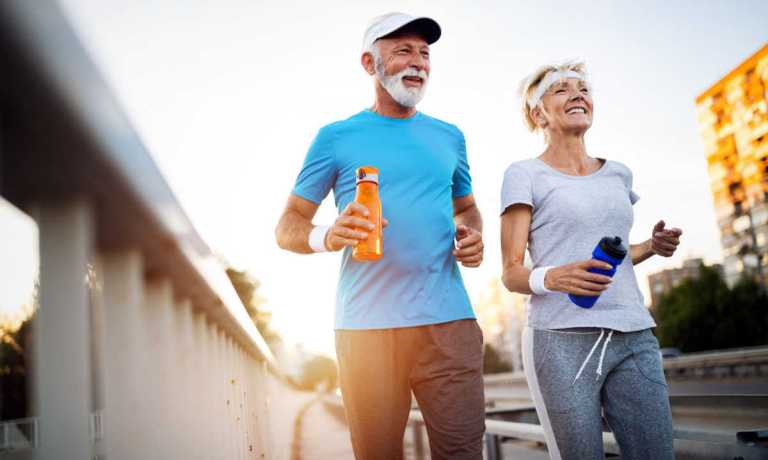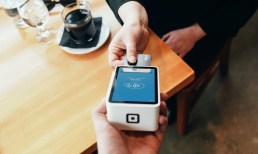Life may end at age 54 in terms of Madison Avenue advertising executives, but in real life, spending and consumption and wealth carries on, in size, for many years afterwards.
While older consumers are often overlooked for more active and trendy spenders, such as millennials and Gen Zs, research shows that millions of seniors have the net worth, disposable income, and free time and energy that should make merchants and brands perk up.
PYMNTS research shows that while many older Americans are experiencing the difficulties imposed by inflation, baby boomers and seniors are holding their own despite it.
The study series “New Reality Check: The Paycheck-To-Paycheck Report: Generational Divide Edition,” a PYMNTS and LendingClub collaboration, found that baby boomers and seniors tend to be the least impacted by paycheck-to-paycheck pressures.
With savings the best defense against the paycheck-to-paycheck struggle, that study states, “Savings balances for consumers who do not live paycheck to paycheck increase by generation. Baby boomers and seniors are the consumers with the highest average savings among those living paycheck to paycheck without issues paying bills ($7,961) and among those who do not live paycheck to paycheck ($22,866).”
Get yours: New Reality Check: The Paycheck-To-Paycheck Report: Generational Divide Edition
Advertisement: Scroll to Continue
While there are some brands that already target seniors — the Jitterbug cellphone is one example — and more that are aiming at the untapped spending power of older generations, when it comes to retailers associated with fitness, the category is not overly crowded.
In short, the dearth of senior-centric products from some of the hottest brands in apparel, fitness and more is one of the sector’s great missed opportunities, but that might be changing.
Active AND Affluent
Still an avid power walker at 84, Nike Co-founder Phil Knight collaborated with Nike designer Tinker Hatfield on its Nike CruzrOne athletic shoe. In a video on the Nike site featuring the sneakers, Knight said, “There needs to be a shoe for the slower runner, and that’s me.”
Peloton is hoping seniors will take to stationary cycling. In a blog post on aging and exercise, Peloton cycling instructor Kendall Toole said, “You never age out of fitness—I encourage people in their 70s to be bold and brave and know they are welcome at Peloton too. For them, exercise should be about the relationship between physical and mental agility.”
Senior lifestyle site Retirepedia notes that while Peloton doesn’t currently have a specific bike made for seniors, “Seniors may find the Peloton Bike+’s larger screen easier to see but will weigh that against its higher price point.”
For its part, Lululemon’s latest earnings reflected continued strong demand for its full-priced, high-end workout gear. And while the company has made great strides this year to broaden its customer base with the expansion of men’s clothes and the addition of tennis, golf and footwear lines, its specific outreach to seniors has not been a part of that strategy.
Even so, websites like Sixty and Me did the marketing lift for big athleisure brands, naming Lululemon, Nike and others in their list of “Best Workout Clothes for Older Women.”
Seniors Are Set to Spend
During the pandemic nesting trend some companies were thinking about seniors with new products. The New York Times reported that “IKEA has begun selling upright armchairs with higher seating to make getting up easier, slanted footstools to promote blood circulation and jar grippers to help unscrew lids, among its products aimed at people with reduced mobility, including the elderly.”
“The range is part of an effort to imbue design catering to people of different capabilities across IKEA’s products, said Britt Monti, a senior designer who worked on the collection. IKEA held off on labeling the range as being specifically for the elderly,” NYT reported.
That same story noted a similar trend in cosmetics, saying “in beauty and skin care, older consumers tend to spend more, making them a key demographic for companies like L’Oréal SA. In France, women over-65s spend 184 euros, equivalent to $223, on beauty products each year, compared with €120 for 25-to-30-year-olds, said Delphine Viguier, global brand president for L’Oréal Paris.”
Late last year the AARP launched its AgeTech Collaborative™ saying in a press release that “a new platform to help AgeTech innovators generate big new ideas and send thriving products into what’s now an $8.3 trillion economy driven by those who are age 50 and older. Innovation will be the key to helping people take advantage of longer and healthier lives in the coming years, the 38-million-member association says.”
In its Longevity Economy report, AARP said the senior cohort “is forecast to spend $27.5 trillion by 2050 (61% of total spending).”
Read: AARP’s AgeTech Collaborative Drives Innovation for Seniors While Tapping $8.3T Market
For all PYMNTS retail coverage, subscribe to the daily Retail Newsletter.




